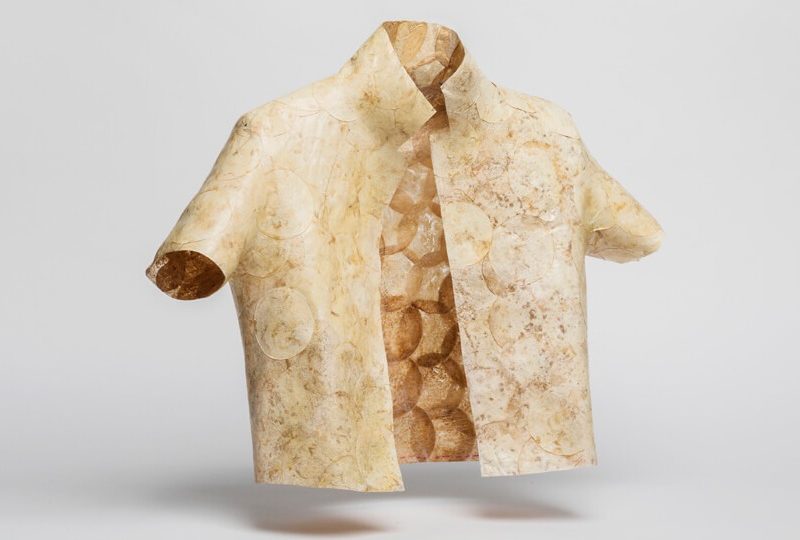Biotechnologies to help the fashion industry
1 September 2020 | Written by La redazione
The fashion industry is witnessing the beginnings of a biotechnological revolution in which living organisms are used to make clothes, resulting in better and more sustainable materials

The world of fast fashion is a highly polluting reality. It is estimated that about 8% of the CO2 emitted into the atmosphere derives from the production of fibers and fabrics, from their transport and from the processing and distribution of clothing, not to mention their combustion: unsold items are often burned. According to estimates by the IUCN, International union for Conservation of Nature, a percentage ranging from 15% to 31% of the microplastics present in the oceans comes from machine washing.
The fashion industry is the second most polluting industry in the world, after oil. A world facing a climate and environmental crisis cannot afford to sustain such a waste of resources. Fortunately, there are many (and more and more) realities that are looking for circular and sustainable ways of meeting a highly consumerist market like that of clothing. Spreading greater sensitivity on these issues would defuse this time bomb at its root, but in the meantime, science is also scrambling to find ways to minimize energy, climate and environmental impacts. In fact, biotechnology is proving to be a valuable ally in the development of new materials and methods to transform fast fashion into sustainable fashion. Let’s discover some of the realities that are putting this change into practice.
Close the loop. Re: Newcell is a Swedish startup that has developed a method that allows you to transform old and used clothes into new fabric: shirts, sweaters, trousers and other cotton clothes are finely shredded and then processed until they are transformed, hypothetically without waste, into a pulp composed of cellulose which is then transformed into fabric ready to be reused.
The seaweed that dyes. Dyes are a critical sector. To make a single pair of jeans, over 7,500 liters of water are polluted, making it the second largest cause of water pollution on the entire planet. A studio located in Berlin, Blond & Bieber, has developed a process that uses algae to dye fabrics. Pigments are extracted from these microorganisms to create a broad spectrum of non-toxic dyes. A particular feature is that these pigments are modified by oxygen and sunlight, causing them to change color over time, a feature that could inspire stylists to take new paths.
Mushroom shirt. When we think of mushrooms we imagine champignons and porcini, but in reality it is a kingdom of organisms that also includes yeasts, molds and many unicellular and multicellular microorganisms. This makes them perfect as a base material for many applications, including in space. It is therefore no wonder that fashion also wants to exploit their abilities. NEFFA, a Dutch brand, has developed a fabric from the roots of some mushrooms. These are grown in a disc shape and then joined to create seamless dresses. The peculiarity of these dresses is that once thrown they simply decompose.
Spiderweb. The silk produced by some insects has been used in the world of clothing for centuries. It is a light and strong material but it can be difficult to produce in large quantities. A German company, AMSilk, found a solution by asking for help from particular genetically modified bacteria. Inside special bioreactors, these bacteria produce spider silk which is then transformed into fibers on which you have extensive control over the characteristics. Furthermore, the production of this canvas does not require any raw material from the animal world or oil, making it highly sustainable.





